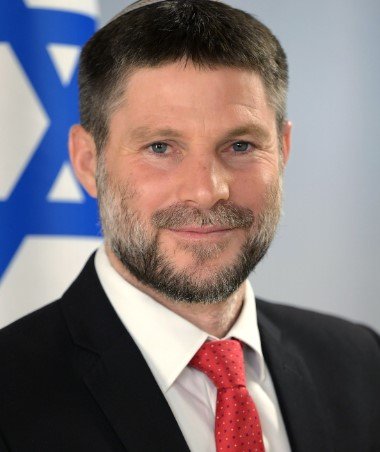Israel’s Finance Minister Bezalel Smotrich voiced strong confidence in resolving tariff disputes with the United States during his recent visit to New Delhi. Speaking on September 8, 2025, he highlighted ongoing negotiations between Tel Aviv, New Delhi, and Washington, amid rising trade tensions sparked by new US tariffs on imports from both nations.
Strong Ties Drive Negotiations
Smotrich stressed the deep-rooted relationships among India, Israel, and the US, pointing out that shared values and economic interests will help overcome current hurdles. He noted that differences in long-term partnerships are normal and can be addressed through open talks.
The minister praised the mutual respect among leaders, including India’s Prime Minister Narendra Modi, US President Donald Trump, and Israel’s Prime Minister Benjamin Netanyahu. These bonds, he said, form a solid base for progress. Recent reports indicate that negotiations have intensified since April 2025, when the US first announced tariffs affecting Israeli and Indian goods.
Smotrich’s comments came during a key visit to India, where he also signed a bilateral investment agreement with Indian Finance Minister Nirmala Sitharaman. This deal aims to boost economic cooperation, signaling positive momentum despite trade challenges.

US Tariffs Spark Global Concerns
The US imposed a 50 percent tariff on certain Indian imports earlier in 2025, with an additional 25 percent linked to India’s purchases of Russian crude oil amid the Ukraine conflict. Similar measures targeted Israeli exports, prompting both countries to seek exemptions or reductions.
Experts view these tariffs as part of broader US efforts to address trade imbalances. For India, the tariffs could impact sectors like technology and agriculture, potentially slowing export growth. Israel faces challenges in areas such as defense and high-tech goods.
Recent data from trade analysts shows India’s exports to the US reached about 85 billion dollars in fiscal year 2024, making any tariff hike a major issue. Negotiations have included multiple rounds, with a phase one agreement targeted for late 2025.
Smotrich backed India’s position on Russian oil, stating that such decisions are understandable in complex global markets. He expressed hope for a balanced resolution that benefits all sides.
Key Players and Recent Developments
Leaders from the three nations have been central to these talks. President Trump has pushed for reciprocal trade deals, criticizing what he calls unfair practices. Prime Minister Modi has emphasized protecting India’s interests, while Netanyahu aims to eliminate Israel’s trade surplus with the US.
A notable development occurred on September 8, 2025, when Israel and India inked a strategic bilateral investment agreement. This move is seen as a step toward deeper ties, possibly influencing US negotiations.
Here are some recent milestones in the trade discussions:
- April 2025: US announces initial tariffs on Indian and Israeli goods.
- May 2025: India seeks full exemption; talks begin with virtual rounds.
- August 2025: Sixth round of US-India talks rescheduled due to firm stances.
- September 2025: Smotrich’s visit leads to new investment pact.
These steps reflect a mix of tension and cooperation, with experts predicting resolutions by year’s end.
Economic Impacts and Future Outlook
The tariffs have rippled through global markets, affecting supply chains and investor confidence. For instance, India’s economy, described by Smotrich as fascinating due to Modi’s reforms, could see a slight dip if unresolved, with estimates suggesting a 0.8 percent GDP impact.
Israel’s economy, strong in innovation, might face export slowdowns, but joint ventures with India could offset losses. Both countries share interests in sectors like defense, agriculture, and technology, fostering potential growth.
Looking ahead, analysts expect more talks in the coming months. A balanced agreement could strengthen trilateral ties, boosting trade volumes projected to hit 200 billion dollars combined by 2030.
To illustrate potential outcomes, consider this table of trade figures between the nations (based on 2024 data, adjusted for 2025 trends):
| Country Pair | Annual Trade Volume (Billion USD) | Key Sectors Affected by Tariffs |
|---|---|---|
| India-US | 190 | Technology, Pharmaceuticals |
| Israel-US | 50 | Defense, High-Tech |
| India-Israel | 12 | Agriculture, Defense |
These numbers highlight the stakes involved and the need for swift resolutions.
Challenges and Paths to Resolution
Negotiations face hurdles like differing views on agriculture protection and energy imports. India has stood firm on sovereignty, refusing to bend on key policies, which delayed some talks.
Smotrich remains optimistic, citing common enemies and shared goals as unifying factors. He believes behind-the-scenes efforts will lead to agreements, much like past deals that resolved similar disputes.
Public sentiment, gathered from social media and forums, shows support for stronger India-Israel ties amid US pressures. Users often discuss how these alliances could counter global uncertainties.
As talks continue, stakeholders watch closely for breakthroughs that could reshape international trade dynamics.
What do you think about these tariff negotiations? Share your views in the comments below and spread the word to keep the conversation going.
